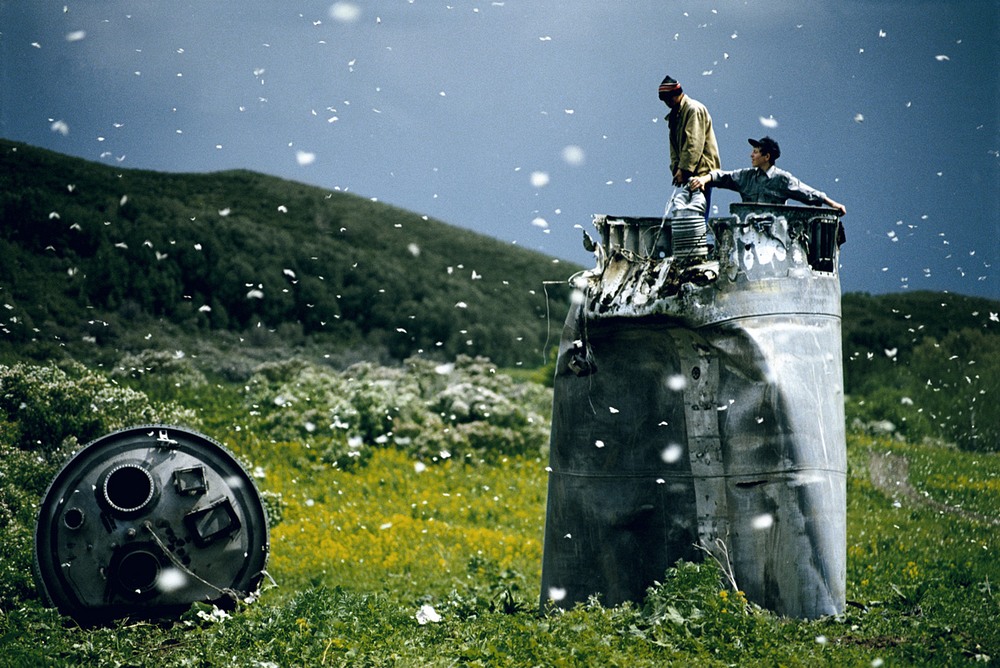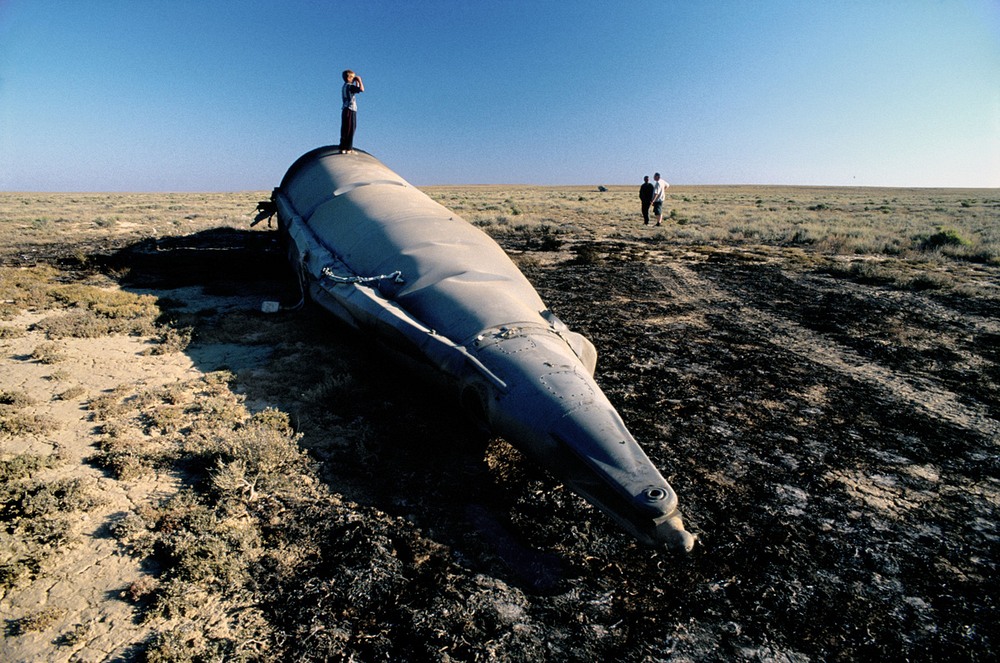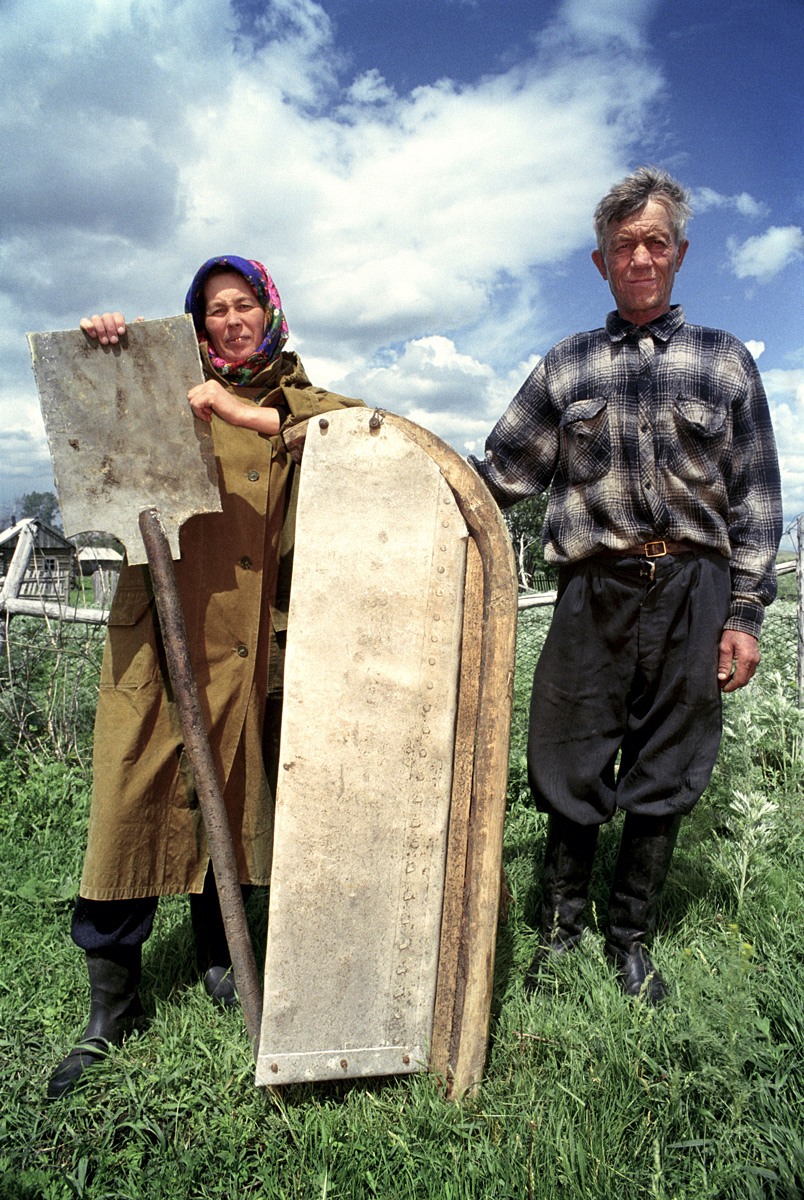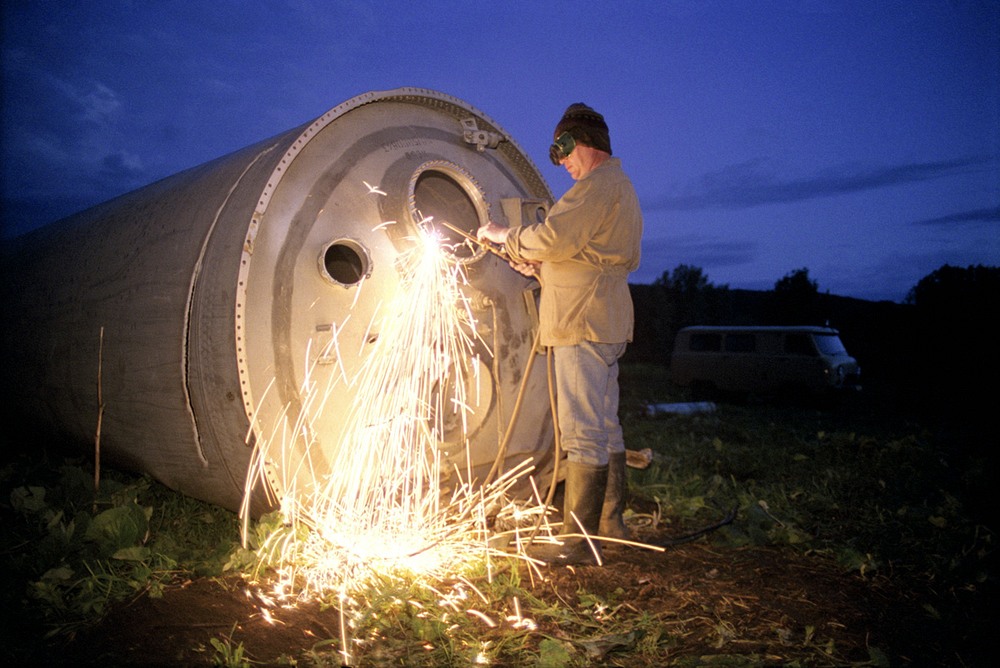The Altai Mountains in Central Asia is exceedingly beautiful with snow-capped peaks, rich pine forests and valleys studded with stunning alpine lakes and glaciers. The region is sparsely inhabited by various ethnic tribes, who lead a quiet and contented life herding sheep and buffaloes, raising bees, and growing grains and leguminous plants. But their peace is routinely shattered by debris from rocket parts that fall from the sky.

Villagers collecting scrap from a crashed spacecraft, surrounded by thousands of white butterflies. Photo credit: Jonas Bendiksen/Magnum
The Altai region lies right beneath the flight path of the largest and busiest spaceport in the world—the Baikonur Cosmodrome in Kazakhstan. Each time a rocket is launched from the Cosmodrome, discarded fuel tanks, empty booster rockets and other debris rain down on these remote hills, spooking residents, wrecking houses and killing livestock. Often the Russian space agency has to hand out compensation to the villagers when there is serious damage to property.
Russian media estimates that since the space port became operational in the 1950s, over 2,500 tons of rocket fragments have crashed down to earth. Residents are warned 24 hour before each launch so that they can get themselves to safety. Most debris fall within a designated strip of land directly underneath the rocket’s flight path, but rocket debris falling outside the designated areas is not uncommon. In 2008, a 10-foot-long chunk of metal from a rocket fell on a village and narrowly missed a house. A launch failure or an explosion can have far more serious consequences. In 2011, an unmanned Soyuz-U rocket headed to the ISS failed within minutes of launch, and tumbled back down to Earth with its tanks full of fuel. It hit the mountains of the Altai and exploded, shattering windows up to 100 km away.

Flight path of rockets launched from the Baikonur Cosmodrome.
During the Soviet era, the union took great pains to recover booster rockets, fearing they might fall into the hands of the Americans and give away secrets about the capabilities of their rockets and about the space program itself. But since the union collapsed, the space agency has stopped picking up rocket parts which now lie strewn across thousands of square kilometer of the Kazak steppe and the Altai mountains.
Within a few years after Kazakhstan broke away from the Soviet Union, a new economy sprung up around these forgotten space junk—the scrap business. Scrap dealers eagerly wait for each rocket launch and then watch the sky with binoculars for falling debris. Then they ride out on jeeps and on horsebacks to the crash sites, and get down to work with blowtorches. Any valuable material such as alloys of titanium and aluminum, as well as copper wires are stripped off the wreck. Anything else which they cannot sell are dragged back to the village and used to make roofs of chicken coops, sheds, toilets and even sledges for children to play with.

Debris from a Soyuz launch lies on the steppe. Photo credit: Jonas Bendiksen/Magnum
But these wrecks are not safe. Rocket fuel, especially UDMH or Unsymmetrical dimethylhydrazine, is extremely toxic, and discarded fuel tanks can have as much as 10 percent of their fuel remaining when they are jettisoned from soaring rockets. Hydrazine dissolves completely with water allowing it to easily penetrate soil and contaminate groundwater which is used for drinking and irrigation. Hydrazine is a known carcinogen and this compound has often been blamed for rising cases of cancer and birth defects in the Altai region. Medical researchers say hydrazine compounds are also poisonous for the liver and the central nervous system, and can cause serious and irreversible neurological diseases.
The problem with discarded fuel tanks is not unique to Russia. Like Baikonur, China’s launch sites are also located far from the ocean and rocket parts containing unburnt fuel fall over populated areas. Launch sites near the ocean don’t have this problem because they can drop their boosters relatively harmlessly into the sea.
In recent years, there has been an increasing interest in rocket propellants that are non-toxic and environmentally friendly. These propellants are easier and safer to handle, and require fewer procedures and less infrastructure to store and transport. Many space agencies like NASA and the ESA have already started to cut down on the use of hydrazine based propellants, limiting their use to only small rocket launches. NASA is also developing a green alternative to conventional propellants, which they hope to use in their next-generation launch vehicles and spacecraft.

Scrap dealers scan the sky waiting for rocket launch. Photo credit: Jonas Bendiksen/Magnum

A farmer casually walks past a fallen spacecraft. Photo credit: Jonas Bendiksen/Magnum

Farming tools made from rocket parts. Photo credit: Jonas Bendiksen/Magnum

A scrapper cuts a fallen fuel tank. Photo credit: Jonas Bendiksen/Magnum


